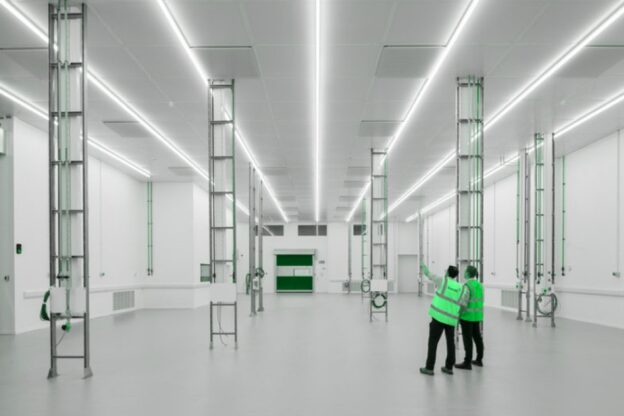In industries like pharmaceuticals, biotechnology, electronics, and aerospace, clean rooms are essential for maintaining a contamination-free environment. Designing a successful clean room goes beyond simply keeping particles out; it requires an integrated approach that considers air quality, pressure, temperature, and more. Here are the key elements of successful clean room design to ensure functionality, efficiency, and safety.
1. Airflow and Filtration
At the heart of clean room design is effective airflow and filtration. Clean rooms rely on High-Efficiency Particulate Air (HEPA) or Ultra-Low Penetration Air (ULPA) filters to trap airborne particles and contaminants. The airflow system must be carefully designed to ensure that clean, filtered air flows through the room in a specific pattern, often as unidirectional or laminar flow, to sweep away particles and prevent contamination. Regularly scheduled maintenance of filters is crucial for maintaining clean air standards over time.
2. Positive Pressure Control
A successful clean room design incorporates positive pressure control to keep contaminants out. In a positively pressured room, clean air is forced out through doors or other small openings, preventing unfiltered air from entering. This pressurization is essential for high-level clean rooms, as even minor contamination from adjacent areas can compromise sterile environments. Clean room designers often use multiple pressure differentials for different zones, creating layers of protection from outer areas to inner, more sterile zones.
3. Temperature and Humidity Regulation
Maintaining consistent temperature and humidity levels is critical in clean rooms. Many sensitive processes and materials require strict climate control to prevent material degradation, static buildup, or condensation, which could lead to contamination. The clean room’s heating, ventilation, and air conditioning (HVAC) system must be capable of maintaining specific parameters and should include alarms to detect fluctuations. Advanced systems allow operators to monitor and control these factors remotely, ensuring conditions remain stable.
4. Clean Room Classification and Standards
Clean rooms are classified based on the number of allowable particles per cubic meter, according to standards such as ISO 14644-1. These classifications (ranging from ISO 1, the cleanest, to ISO 9) determine the level of contamination permissible for specific activities. A successful clean room design aligns with the required classification, dictating factors like air change rates, filtration quality, and monitoring systems. Design considerations should be tailored to the specific class and industry regulations to ensure compliance.
5. Appropriate Material Selection
The choice of construction materials for clean rooms directly impacts the ease of contamination control. Walls, floors, and ceilings must be made from materials that are smooth, non-porous, and resistant to corrosion and microbial growth. Common materials include stainless steel, vinyl, and epoxy-coated surfaces, which are easy to clean and resistant to chemical exposure. Choosing suitable materials ensures that surfaces do not generate particles or trap contaminants, both of which can compromise the clean room environment.
6. Effective Containment and Safety Protocols
Containment is essential in clean rooms dealing with hazardous substances. A well-designed clean room should include containment areas and safety equipment, such as fume hoods, glove boxes, and biological safety cabinets, for handling potentially dangerous materials. Safety protocols should also incorporate easy-to-access emergency systems, alarms, and personal protective equipment (PPE) stations to prevent contamination events and ensure the safety of personnel.
7. Strict Entry and Exit Protocols
An essential component of clean room design is a controlled entry and exit system. Many clean rooms use anterooms or airlocks to create a buffer zone that reduces contamination risk when personnel enter or leave. These zones often have HEPA-filtered air showers or handwashing stations, along with gowning areas for workers to don appropriate clean room attire. By establishing strict protocols and minimizing personnel movement, designers can reduce the risk of external contaminants entering the clean room.
8. Continuous Monitoring and Maintenance
Clean rooms require continuous monitoring to detect and mitigate any risks to their controlled environment. Sensors track variables like particle count, air pressure, temperature, and humidity, while automated systems send alerts if values drift outside the acceptable range. Regular maintenance and calibration of equipment are also vital, ensuring that filters, HVAC systems, and other critical components remain fully operational. These practices help maintain clean room integrity and ensure compliance with regulatory standards.
Conclusion
A successful clean room design requires a multi-faceted approach that considers airflow, pressure, climate, materials, and protocols. By integrating these elements, businesses can achieve an environment that supports their specific cleanliness requirements and operational needs. A clean room designed with these key elements in mind will enable precise control over contaminants, optimize efficiency, and ensure safety, fostering a productive environment for industries that depend on stringent contamination control.
